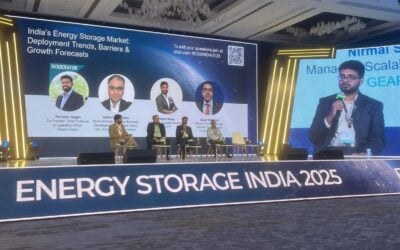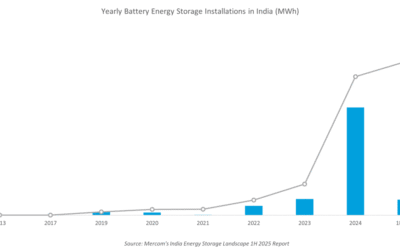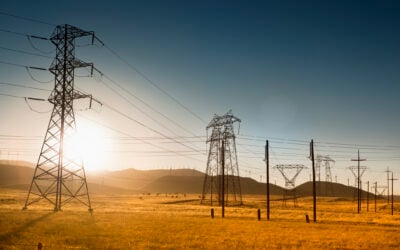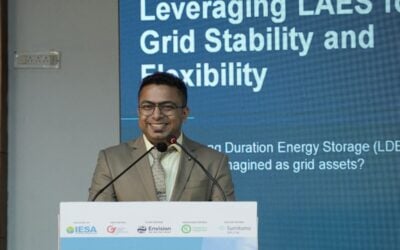Siemens Siestorage containerised energy storage system. Image: Siemens.
German utility SWW Wunsiedel has ordered a large-scale battery storage system from engineering and technology giant Siemens, which will participate in weekly tenders to help balance the local grid.
The distribution grid-connected system will be based on Siemens’ Siestorage modular electrical energy storage system (ESS), which consists of grid connection, converter, controls and battery components. It will use 6MW+ of lithium-ion batteries. The system will utilise three containers of batteries, a container with inverters, a concrete station hosting transformers and control system.
The system will participate in the primary control reserve market which allows German transmission system operators (TSO) to maintain the balance between electricity consumption and generation on their networks. To enter into the weekly bidding process, the Siestorage system will need to be able to offer the full amount of power required within 30 seconds so that the frequency of the transmission grid stays at the required 50Hz. Energy storage with batteries is better placed to respond quickly to such grid signals than conventional thermal generation.
Siemens and SWW Wunsiedel, which supplies electricity, water and heat as well as telecommunications to its customers in northern Bavaria, agreed on a 10-year financing model, with the system expected to be completed and commissioned in 2018. Increased levels of renewable energy in SWW Wunsiedel’s service area have contributed to volatility of supply, leading in part to a corresponding increased need for such grid-balancing devices.
Try Premium for just $1
- Full premium access for the first month at only $1
- Converts to an annual rate after 30 days unless cancelled
- Cancel anytime during the trial period
Premium Benefits
- Expert industry analysis and interviews
- Digital access to PV Tech Power journal
- Exclusive event discounts
Or get the full Premium subscription right away
Or continue reading this article for free
The utility has an ambitious road map plan in place to cover energy demand with renewable and local energy sources. SWW Wunsiedel is also aiming by 2030 to make the region energy independent, including the ability to act autonomously in the event of emergency.





